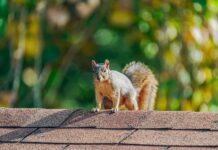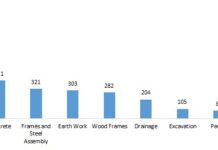Squirrels in the attic are a common winter nuisance, identifiable by their distinct scratching and scurrying sounds. Finding how they get in, however, can be tricky. Pest control experts agree that understanding squirrel behavior—their climbing ability, persistence, and even aggression—is key to sealing off entry points. Here’s a breakdown of the most common invasion routes, and how to stop them.
Using Tree Branches as Bridges
Squirrels are adept climbers and will readily use overhanging tree branches as a direct path to your roof and, eventually, your attic. Keeping branches trimmed at least eight feet away from the house is the simplest deterrent. This eliminates the natural “bridge” that allows easy access.
Chimneys as Cozy Nests
An unused chimney flue, especially one with gaps, provides an ideal nesting spot for squirrels. Like a hollow tree, it offers shelter and protection. Capping the chimney is a straightforward fix to prevent entry.
Roofline Gaps and Soffit Weaknesses
Squirrels exploit gaps where the roof meets the fascia or soffit, often chewing through exposed wood. These areas are attractive because the wood is easier to gnaw through. Sealing these gaps with galvanized steel mesh or hardware cloth is an effective solution. Regular inspection is vital, as squirrels will enlarge existing holes.
Rotting Fascia Boards
Damaged or rotting fascia boards are prime targets. Decayed wood is soft and easily chewed through. Replacing damaged boards or reinforcing them with metal flashing eliminates these vulnerable entry points. Ignoring these issues not only invites pests but also compromises the structural integrity of your home.
Attic Vents: An Open Invitation
Attic vents, necessary for ventilation, can also serve as entry points for squirrels and other wildlife. Wooden vents are particularly susceptible to chewing. Replacing wooden vents with metal alternatives is a long-term solution, though regular inspection remains important.
By understanding how squirrels exploit weaknesses in your home’s structure, you can proactively prevent infestations. Trimming trees, sealing gaps, and reinforcing vulnerable areas are the most effective strategies for keeping them out.
These preventative measures are not just about pest control; they’re about maintaining the long-term health of your home and preventing costly repairs down the line.

















































